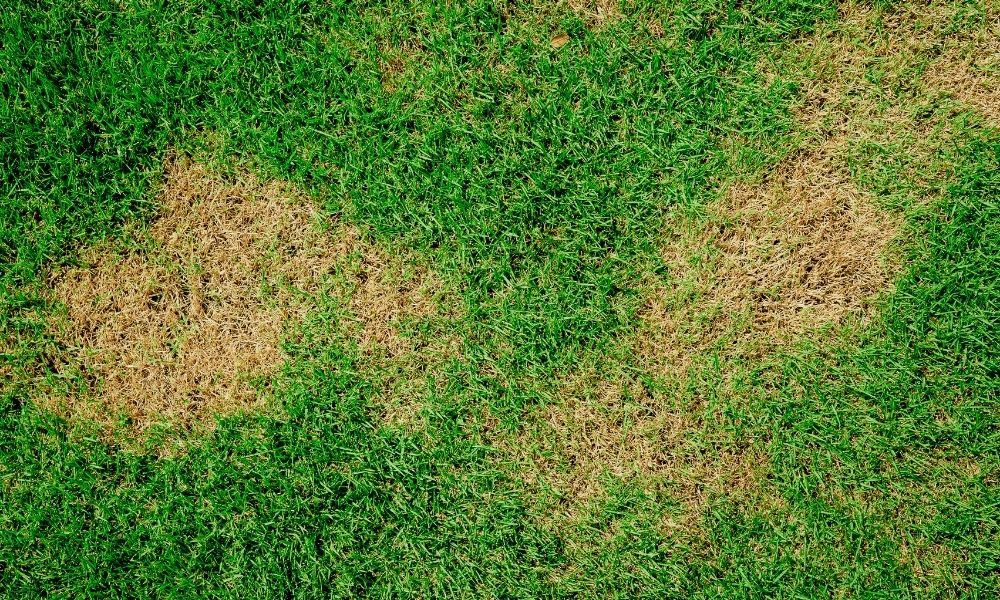
We’ve all been there. We do everything right with our lawn and – suddenly – the dreaded yellow patches appear, as if from nowhere!
Sometimes, the things we think we’re doing right are the problem. Other times, yellow grass is completely out of our control.
But all hope is not lost! Yellow grass will turn green again. If you’re staring at your lawn in despair right now, wondering ‘Why is my grass turning yellow?!’, this article is for you.
Here are the top reasons why grass turns yellow and how to fix it.
5 Reasons Why Your Grass is Turning Yellow
1. Too Much Sun
Too much sun and too little water are a bad combination when it comes to your grass. A lawn that’s been exposed to heat and sunlight for excessive periods can quickly dry out.
When this happens, your grass drains the water from its leaves and feeds it to its roots underground. While this protects the grass from completely dying, it can cause widespread yellowing.
2. Overwatering
Dryness could be the cause of yellow grass, but so could wetness! The more water there is on your lawn, the less oxygen it’s getting. This can cause waterlogging and can eventually lead to your grass turning yellow.
Creating a muddy, yellow bog in your back garden isn’t the only danger of overwatering. Too much moisture creates the perfect environment for fungal diseases to spawn, which can cause even more damage.
3. Cutting It Too Short
While cutting your grass regularly can prevent it from turning yellow, cutting it too short can cause it! It’s called scalping and it strips the moisture from your lawn.
This extreme and sudden lack of water can turn patches of grass (or the whole thing) yellow almost immediately.
4. Diseases
Most lawn diseases start off as yellow patches. The culprits are usually small larvae or fungal infections, like fairy rings, snow mould, fusarium or smut.
Most diseases can be tricky to spot, so you may need to get up close and inspect your lawn with a fine-tooth comb to see if there are any suspicious infestations.
5. It’s Lacking Nutrition
The biggest cause of yellow grass is a lack of nutrition and a nitrogen imbalance. A healthy lawn can self-maintain a stable level of nitrogen, which promotes new growth and boosts greenery.
The three most common causes of nutrition deficiency in grass are:
- Weeds – Lawn weeds can sap the nutrition away from your grass
- Over-fertilisation – Too much fertiliser can scorch grass blades
- Dog urine – Dog urine is high in nitrogen and can burn concentrated yellow spots in your lawn
5 Tips on How to Fix Yellow Grass
1. Fertilise
If you think your lawn is nutrition-deprived, fertilisation may be the best fix. A good lawn feed that’s applied at the right time can turn yellow grass leafy-green again.
For better results, cut your grass a few days before fertilisation and make sure the soil isn’t too dry. Don’t be tempted to fertilise too often, as this can quickly lead to yellowing again. The best time to fertilise is usually in Spring.
2. Rinse Dog Urine
To prevent the need for regular fertilisation, rinse the area your dog wees in almost immediately afterwards. By spreading out the nitrogen, you could be helping your lawn naturally fertilise!
3. Keep Lawnmower Blades Sharp
Cutting your grass with blunt blades exposes the tips and leaves them susceptible to disease. If your lawn turns yellow after mowing in Spring or Autumn, blunt blades could be the issue.
Sharpen your blades regularly (and safely) if you need to. To keep them sharp, stick to mowing when the grass is dry and there’s no dew present.
4. Raise Cutting Height
Does your grass turn yellow or brown after cutting it all year round? If blunt blades aren’t the issue, you could be cutting your grass too short.
To prevent scalping, raise your lawnmower height very slightly the next time you mow.
5. Water
More often than not, yellow grass is caused by dryness. But there’s a fine line between overwatering and just right.
Most lawns get their moisture through rainwater. If you’ve had a dry spell recently and your grass is turning yellow, water deeply and infrequently. Stick to morning watering where possible, as wet grass at night creates the perfect conditions for diseases to spawn.
A good tip to see if your grass needs more water is to check your soil with a screwdriver. Healthy grass will be moist at least six inches underground. If you can’t get your screwdriver in, your grass definitely needs more water!
Conclusion
Sometimes, it’s the little things that can make all the difference with your lawn.
A little bit of effort and a few changes to your usual routine can spruce up your grass in no time – leaving your neighbours green with envy!

